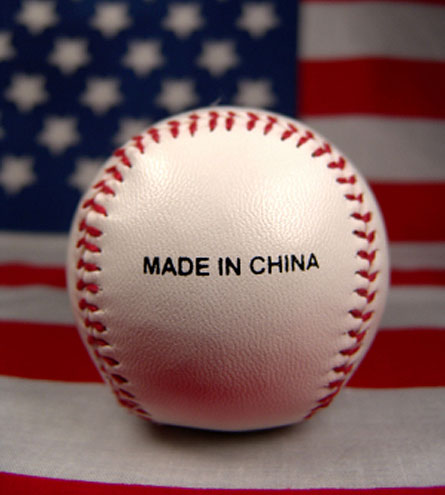Trade affects China’s carbon footprint
Over a five year span — 2002 to 2007 — China’s carbon-dioxide emissions nearly doubled. With that meteoric increase, the world’s most populous land saw enormous economic growth and striking increases in prosperity. The down side: It simultaneously became the nation with the largest carbon footprint.

A new study finds that the United States and others that import a substantial quantity of goods from China appear responsible for some one-third of China’s greenhouse-gas emissions, a major contributor to global warming.
Christopher L. Weber of CarnegieMellonUniversity in Pittsburgh worked with colleagues in Norway and Britain to follow the carbon through China’s economy. One need only look to the Asian power’s smog-laden skies to see where much of that carbon is coming from: the nation’s huge and growing reliance on coal-fired electricity.
As of 2005, the most recent year for which data are available, China was spewing greenhouse-gas emissions equivalent to some 1.7 billion metric tons of carbon dioxide annually — just to produce goods for foreign consumption. That number corresponds to roughly one-third of the nation’s greenhouse-gas emissions, the new study finds. Since then, China’s exports have continued to climb.
Weber emphasizes that everything about his team’s analysis — and others that have attempted to do similar calculations — “are very fuzzy.” Part of the problem is that China’s reporting on its energy industries, their emissions, and on their contribution to the manufacturing of goods for use domestically and internationally are fuzzy.
That said, Weber points out that it’s also unlikely that the trends his team reported are off by a lot, since they are consistent with data issued by a host of different census and trade organizations.
One thing that sets the analysis by Weber’s team apart is its attention to China’s imports. Here, we’re talking about the raw materials that go into making steel and other constructed goods. And the components — not least, computer chips — that go into China’s burgeoning electronics industry.
For instance, the computers that China exports tend to reflect the assembly of parts, including computer processors, made elsewhere. Greenhouse-gas emissions associated with those components, then, fall on someone else’s carbon-balance sheet.
Which is important because China’s imports are substantial. Weber’s team shows that from 1987 to 2005, the share of domestic CO2 emissions avoided by China as a result of buying imports has climbed mightily: from a little more than 19 percent of the CO2 releases that would have been projected on the basis of China’s activities to a whopping 43.7 percent of the total.
In other words, by 2005 more than 40 percent of the greenhouse-gas emissions associated with China’s activities — including the manufacturing of goods for export — were incurred elsewhere, and before Chinese companies laid their hands on these feedstocks, components, or manufacturing machinery.
This can be a good thing for global climate, Weber contends; it all depends on how energy- and resource-efficient China’s suppliers are. “Because China is a really coal-intensive economy,” the economic analyst says, “and not that energy efficient, the [CO2] emissions it avoids by not producing those imports are higher than the emissions that may have actually been produced delivering those imports.”
The new analysis by Weber’s group will appear in an upcoming Energy Policy (although the journal has published it early online).
So what share of the CO2 associated with U.S. goods and services is being outsourced to China? “Somewhere in the ballpark of 10 percent of U.S. emissions,” he says — or between 500 million Mt and 600 mMt, based on some earlier work by Weber’s group.
Not surprisingly, China has been arguing that since it’s producing substantial quantities of goods for others, it shouldn’t be held responsible — or at least not totally responsible — for the CO2 burden attributable to its exports.
There’s some merit to that argument. On the other hand, because of the large quantity of China’s imports, the cumulative share of CO2 emissions that China is in turn outsourcing to its resource- and components suppliers exceeds those associated with its exports. So, should China be held responsible for its outsourced greenhouse-gas emissions?
Clearly, no one expects China to volunteer to do so. Nor to give up reliance on its one great energy resource: coal.
What that means is that to clean the air of these climate-modifying pollutants, maybe we need global efforts and global payments.
Owing to the increasing globalization of economies around the world, big and small, it’s won’t be easy to apportion responsible for the greenhouse gas associated with any particular product or service precisely. And we all will suffer climatically if those emissions aren’t curbed.
So let’s bite the bullet and figure out a way to discourage carbon-spewing by both exporting and importing economies.







